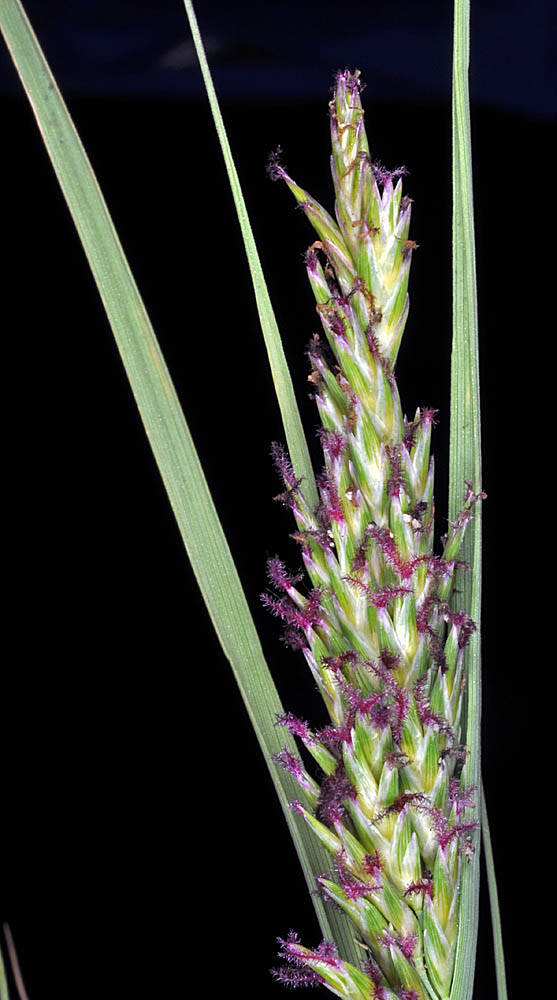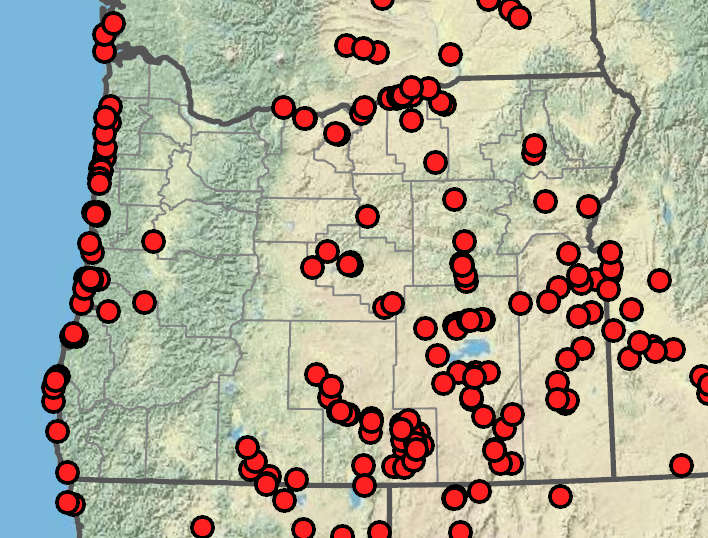Distichlis spicata
saltgrass
sheaths glabrous;
collars glabrous or with hairs 0.5– 3 mm;
ligules about 0.5 mm; erose; front often with hairs 0.5–3 mm;
blades 1–8(20)cm × 2–4 mm; involute except at the base, often stiffly spreading, glabrous or sometimes with sparse, spreading hairs on the upper surface.
1–7 cm × 5–20 mm.
5–20 × 4–7 mm, with 5–20 florets, unisexual.
lower 2–3 mm; upper 3–4 mm.
2–5 mm.
3.5–6 mm; firm; smooth, staminate lemmas narrower and thinner in texture;
paleas on the pistillate spikelets bowed out.
3–4 mm.
=40.
Distichlis spicata
Coastal salt marshes and interior alkali flats, desert seeps, and sandy lakeshores. 0–1900 m. BR, BW, Col, CR, ECas, Est, Lava, Owy. CA, ID, NV, WA; throughout most of North America; South America; Australia. Native.
This grass exhibits wide intraspecific variation, and, as a result, many taxa have been described at the species or infraspecific rank.
Barbara Wilson, Richard Brainerd, Nick Otting
- Local floras:
BC,
CA,
OR,
WA
- Local Web sites:
CalFlora,
CalPhotos,
Flora NW,
PNW Herbaria
WildflowerSearch
iNaturalist (observations)
USDA Plants Database
- LBJ Wildflower Center
- SEINet
- Plants of the World Online
- Encyclopedia of Life
- Wikipedia
- Google Image Search



